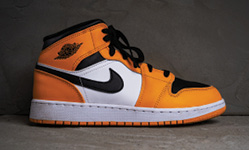5 Hot Augmented Reality and Virtual Reality Video Applications
Augmented Reality (AR) and Virtual Reality (VR) technologies are transforming the way businesses engage with their customers. In the realm of video marketing, AR and VR videos have emerged as powerful tools to create immersive experiences and captivate viewers at a new level. They transport viewers into a virtual world and provide interactive and personalized experiences. These technologies are constantly in flux, so keeping up with how they are evolving business and customer interaction is key. Here are five AR/VR video marketing applications to consider leveraging.
1/ Immersive Experiences
AR/VR videos offer a unique opportunity for businesses to transport viewers into a virtual world, allowing them to experience products, services or virtual tours in a more realistic and memorable way. Businesses can go beyond traditional video content and create interactive experiences blending physical and virtual worlds.
Car manufacturers use AR/VR for virtual test drives, allowing potential buyers to explore features and putting them in the driver’s seat without ever leaving their homes. This experience fuels curiosity and offers a unique way for customers to visualize themselves interacting with the product.
2/ Enhanced Customer Engagement
Traditional video marketing often struggles to capture and retain viewers’ attention. However, AR/VR videos have the power to captivate audiences by offering a more interactive and engaging experience. Viewers are active participants rather than passive observers, resulting in increased engagement and longer interaction times. Companies can let customers try on clothing and makeup or visualize furniture in their own space. This interactivity helps customers make more informed decisions and helps reduce hesitation.

3/ Amplified Brand Awareness
AR/VR videos provide businesses with a cutting-edge approach to stand out from the competition and create a lasting impression on their target audience. By incorporating these technologies into their marketing strategies, brands can show they are innovative and forward-thinking. AR/VR videos attract attention and generate buzz, leading to increased brand visibility and awareness.
When customers have a memorable and immersive experience with a brand, they are more likely to share it with their networks, amplifying the brand’s reach and potentially attracting new customers. A Nike’s AR sneaker campaign involving dance artists allowed customers to preview shoes. It generated 32 percent more sales of the shoe model and 22 percent more visitors to the website during the AR experience.
4/ Personalized and Targeted Experiences
AR/VR technology allows businesses to deliver personalized experiences tailored to each viewer’s preferences and interests. By collecting data on viewer behavior and preferences, businesses can create customized AR/VR videos that cater to individual needs. For instance, a travel agency can use VR to offer personalized virtual tours based on a customer’s travel preferences or showcase specific destinations they are interested in. Events can be previewed by immersing yourself in the experience from a specific perspective.
5/ Measurable Results and Improved ROI
Texting may seem impersonal, but it’s being used for building customer relationships with its potential for two-way conversations. It’s often faster and more convenient than calls or online chats. There’s no hold time or waiting to receive a response. The overall experience matches today’s customer expectation.
From the October 2023 issue of Direct Selling News magazine.


